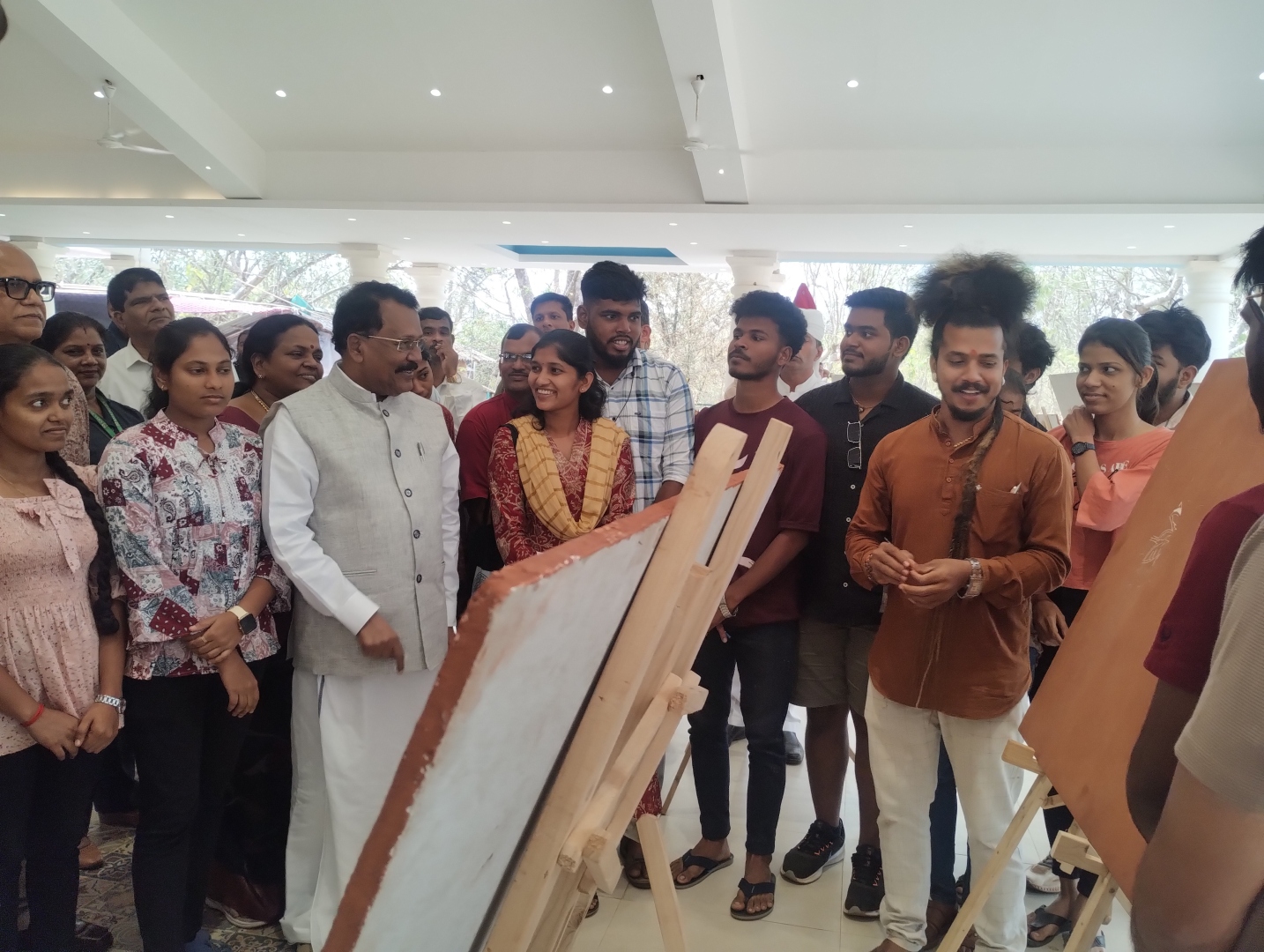
Governor P S Sreedharan Pillai interacts with participants of ‘Kaavi Art’ workshop at Raj Bhavan on Wednesday.
PANAJI
The art and culture of any State holds a crucial role in promoting it on the national and global map. The responsibility of conserving and preserving the heritage lies equally on the government as well as the people of that State.
Goa’s Kaavi Art, a traditional way of painting walls and creating murals with the help of native red soil, was disappearing, and fading away due to ignorance and lack of patronage, and it is because of its endangered status that the Raj Bhavan has taken the initiative to rejuvenate and revive it to its fullest form,” stated Governor of Goa, P S Sreedharan Pillai after the inauguration of ‘Kaavi Art’ workshop at Raj Bhavan on Wednesday.
The Governor underlined the importance of preserving the ancient Kaavi art of the State and taking this legacy forward through GenNext to the global audience. A four-day Kaavi Art workshop was inaugurated by the Governor in the presence of former Chief Minister of Goa and Margao MLA Digambar Kamat, Kaavi artist Sagar Naik Mule, historian Sanjeev Sardesai, secretary to Governor M R M Rao, former secretary to Governor Mihir Vardhan (IAS), budding Kaavi artists and others. The Kaavi workshop would be conducted by Goan Kaavi artist Sagar Naik Mule for the next four days, training 21 budding Kaavi artists and enthusiastic learners.
In his address, the Governor also highlighted other initiatives by the Raj Bhavan, stating that people are supreme in democracy and the politicians must work for their betterment. He mentioned that 25 persons from various Goan vocations would be honoured at the Raj Bhavan including Poder, Padeli, Render, Shetkar, Mistri, Vinkar etc on February 17. Meanwhile, financial aid to cancer patients was distributed to 165 persons at the hands of Margao MLA Digambar Kamat.
Lauding the Governor for taking this initiative of offering patronage to the fading Kaavi Art, Margao MLA Digambar Kamat, said Pillai seems to be people's governor in true sense because he travels to the remote areas in Goa and is keen in getting acquainted with the local art, culture, vocations and resolving people's issues.
“The Governor has crossed all the boundaries of the Raj Bhavan and set a new trend of travelling to the people and inviting people to Raj Bhavan. The artists who would be trained in Kaavi art at Raj Bhavan should feel honoured that they would be receiving a certificate from the Raj Bhavan on the last day,” said Kamat.
Historian Sanjeev Sardesai spoke on the origin of the Kaavi art and stated that Goa, Goans and Goan art and culture is closely related to its soil. “Our festivals like Chikhal Kala, played at Marcel are examples of how clay is revered in our culture. Kaav is the soft, red soil found in Goa, which has red oxide content in it, giving it a typical colour. This variety of soil is mostly found in the hinterlands, in the North-eastern belt of Goa.”
Drawing attention to the fact that though the Kaavi art originated in Goa and was depicted on the walls of temples and elite homes, it was during the Portuguese era when temples were destroyed, that this unique art travelled outside Goa, to the neighbouring Maharashtra and Karnataka, claimed the historian.
Kaavi artist Sagar Naik Mule thanked the Governor of Goa for opening the doors of Raj Bhavan for the budding artists and for patronising them. “I feel that Kaavi Art has been honoured by this gesture and has succeeded in securing a place of honour in the Raj Bhavan, which is nothing less than a ‘Raj Yog’, said Sagar, who has been honoured by the Prime Minister Narendra Modi who mentioned his efforts to preserve and promote this form of art in his ‘Mann Ki Baat’ programme, has been continuously working towards taking this traditional form of art on global platform.